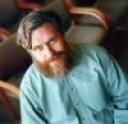Challenges & opportunities in applying computational & synthetic biology to preventing disease & creating new materials

IEEE Computer and Engineering in Medicine and Biology Societies, MIT biological engineering and biomedical engineering student group (BE-BMES), and GBC/ACM
In the past decade, the cost of reading and writing DNA has dropped a million-fold, outstripping even Moore's law for exponentially increasing computer power. The challenge for the next decade will be to integrate molecular engineering and computing to make complex systems. The development of engineering standards for biological parts, such DNA assembly, enables computer-aided design (CAD) and manufacturing at levels of abstraction from atomic to population scales. Biologists have access to tools that allow them to optimize catalysis, or populations of organisms to manufacture drugs transitioning to smarter therapies, including oral vaccines and programmable personal stem cells and bacteria (exploiting sensors, logic and actuators harvested from natural and lab evolution) that e.g. sense a nearby tumor, coordinate an attack and drill into the cancer cells to release toxins. Another application is in the production of chemicals, biofuels and foods — for example, the development of parasite-resistant, photosynthetic crops that can double their biomass in just three hours. As costs drop, such technology will allow developing nations to leapfrog fertilizer-wasting, fossil-fuel-intensive and disease-rife farming for cleaner, more efficient systems, just as they are leapfrogging costly land-lines in favor of mobile-phone networks. As electronic chips hit conventional manufacturing limits, they might be replaced by atomically precise and fault-tolerant biological circuits. Three-dimensional 'bio-printers' could make nearly all manufactured goods much less expensive. Another grand challenge will be to anticipate unintended consequences of the synthetic biology revolution — ecological, economic and social — and to safeguard against them.
Dr. Church will describe some of the work going on in the Boston area that is presaging these developments and outline some of the open challenges that still lie ahead.
George Church is Professor of Genetics at Harvard Medical School, Professor of Health Sciences and Technology at Harvard and MIT, an associate member of the Broad Institute, and Director of the Center for Computational Genetics. He graduated from Duke University with degrees in Chemistry and Zoology, co-authoring research on 3D-software & RNA structure with Sung-Hou Kim. His PhD from Harvard (with Wally Gilbert) included the first direct genomic sequencing method in 1984. He helped initiate the Human Genome Project while working Biogen Inc. and as Monsanto Life Sciences Research Fellow at UCSF with Gail Martin. He invented broadly-applied concepts of molecular multiplexing and tags, homologous recombination methods, and array DNA synthesizers. Technology transfer of his work on automated sequencing & related software to Genome Therapeutics Corp. resulted in the first commercial genome sequence (the human pathogen, H. pylori, 1994). He has served in advisory roles for 12 journals (including Nature Molecular Systems Biology) and 5 granting agencies. Innovations in DNA reading & writing & allele replacement in cells lead to current research & commercialization in human genomics (Complete Genomics, PersonalGenomes.org, 23andme, Knome) & synthetic biology (SynBERC, Joule, LS9) & new ethics/security strategies. See http://en.wikipedia.org/wiki/George_Church and http://arep.med.harvard.edu/gmc/ for more details.
